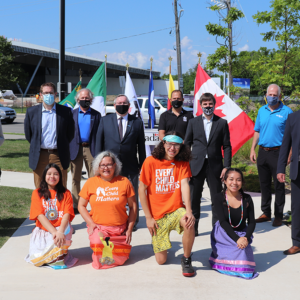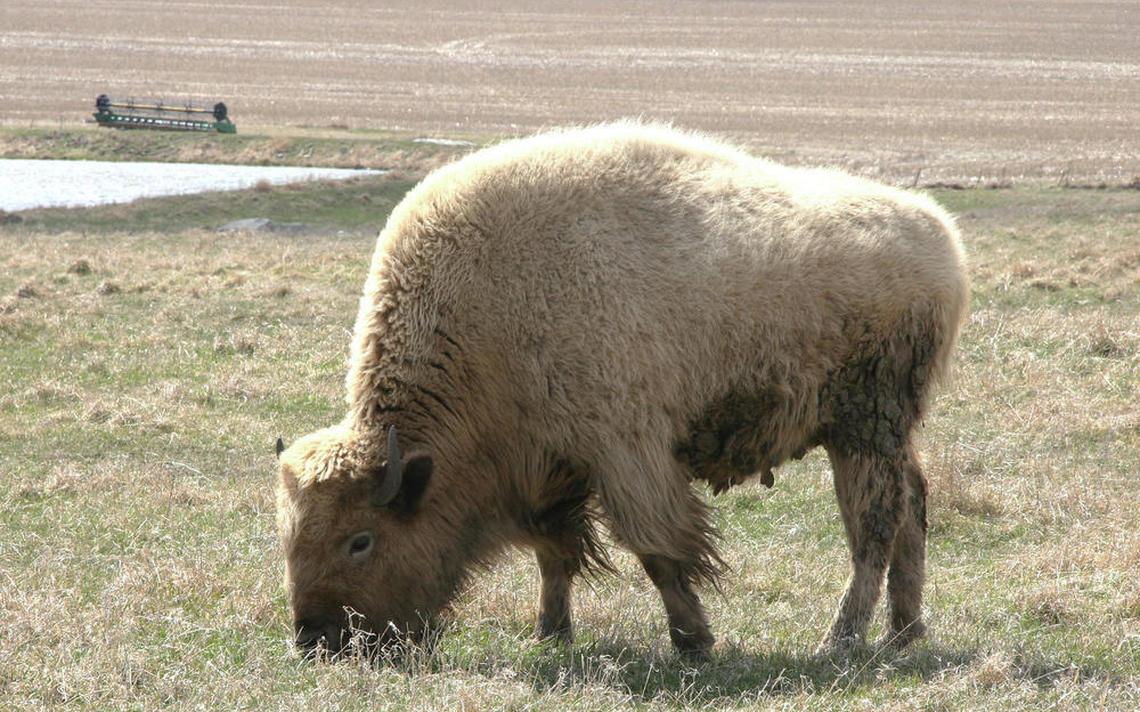On Monday, the Grassy Narrows (Asubpeechoseewagong) First Nation and the Chiefs of Ontario held a press conference about the province’s decision to push ahead with clearcut logging at all costs on Grassy Narrows traditional territory and its concealment of a 100-page report about the effects of mercury poisoning on the community.
The residents of Grassy Narrows First Nation have suffered since the 1960s from the effects of mercury poisoning after many tons of neurotoxins were released in the area by logging and pulp mill operations. But successive provincial governments (including the current Wynne government) have failed to take remedial action.
At the press conference Steve Fobister Sr, the former Treaty #3 Grand Chief, announced an immediate hunger strike until the provincial government acts. He said, “I’m dying anyway, one piece at a time.” Like many people in his community, Fobister, who suffers from ALS from mercury poisoning, has severe disabilities.
First Nations leaders stated today that a report about the effects of the poisoning was never made public. A 2009 report, entitled “Literature Review: The Impact of Mercury Poisoning on Human Health,” was commissioned by the Mercury Disability Board, yet kept hidden from those involved. CBC News reports that “The disability board was created in the 1980s after Wabaseemoong Independent Nations and Grassy Narrows negotiated an out-of-court settlement with Ottawa, Ontario and two paper companies for all claims due to mercury contamination. Representatives from Ottawa, Ontario and Wabaseemoong and Grassy Narrows sit on the board, but [Grassy Narrows Chief] Roger Fobister said First Nations representatives knew nothing about the report.”
Stan Beardy, Regional Chief of the Chiefs of Ontario, expressed his “full support for the people of Grassy Narrows,” and asked why the Wynne government won’t acknowledge mercury poisoning exists, even though “people are dying.” Treaty #3 Grand Chief Warren White stated, “It’s time the government reconciles and deals with the genocide upon our people.”
For those suffering from the horrors of mercury poisoning, compensation is calculated, as per an agreement reached in 1985, on a point system based on the severity of symptoms. However, the three-decade-old agreement has no provision to adjust the payments for inflation. For someone in Steve Fobister Sr’s case, compensation comes to only $250 per month, or $8.22 a day. This doesn’t cover costs for follow-up medical appointments and travel to Winnipeg, the loss of the ability to work, and the awful suffering inflicted. The Ontario Health Insurance Plan (OHIP) does not provide medical transportation in mercury-related cases, and the Mercury Disability Board only pays for a single mercury examination, not follow-ups. The people of Grassy Narrows have asked the provincial government to establish a mercury treatment centre in Kenora, but this plea has fallen on deaf ears.
The 2010 report highlights the “urgent need” to improve the general health of those from the two communities. As CBC News states, the report concludes, “There is no doubt that there was high mercury exposure in these two communities in the late sixties and early seventies…. There is no doubt that at these levels of exposure many persons were suffering from mercury-related neurologic disorders…. There should have been extensive examinations and follow-up of these communities from that time forward, and assistance with respect to health and nutrition.”
The report also suggests that mercury poisoning continues to affect people in Grassy Narrows and Wabeseemoong First Nations and that they are not receiving adequate medical care. “We … want to highlight the urgent need to improve the general health of the two communities as the health status of the participants was clearly poor,” the authors wrote. “The rate of residents reporting neurological symptoms was very high for such a small population.”
The province of Ontario and the federal government have persistently denied that people have been poisoned by substantial levels of mercury. Grassy Narrows people believe that this report was not made public and shared with the people whose health is at stake because it proves what they have known and suffered from for years.
While the province claims that – although the report is not public – they did ‘discuss’ it at one open house at Grassy Narrows with those in attendance, the leadership of Grassy Narrows says they were never given this information. “How are we supposed to know about this report if the government keeps it to themselves? We are reacting with the same amazement as anyone else would.”
Damning as is the evidence in this report, which was shamefully hidden by the provincial government, it relied on old science and since this time it has been documented that people can be impacted at much lower levels of mercury than the report assumed.
In 2010, it was reported a study by Japanese scientist Dr. Masazumi Harada that indicated 79 per cent of 187 people in the area tested in 2002 and 2004 had or may have had Minimata disease, a condition arising from exposure to methylmercury. Dr. Harada first visited the Indigenous communities of Grassy Narrows and Whitedog in 1975. He found people with mercury levels over 3 times the Health Canada limit in Grassy Narrows, and 7 times the limit in Whitedog. When he returned in 2004 he found that 43% of his original Grassy Narrows patients were dead, including all those who had mercury levels above the Health Canada guidelines in 1975.
Neither the federal or provincial government has recognized the case of mercury poisoning and maintains that the symptoms could be from other causes. In, “the 50 years since the province allowed 10 tonnes of mercury to be dumped into the Wabigoon River… It is even more shocking that this river has never been cleaned up… In the U.S., the Environmental Protection Agency advise that any spill larger than 2 tablespoons of mercury should be reported to the state environmental agency, and it is mandatory to call the National Response Center. But just north of the border, tonnes of mercury can be put into river systems with little concern about cleanup, remediation and human health – apparently.”
If the Wynne government’s predatory push to clear-cutting more land is allowed, more mercury will be released into the food chain. As was previously mentioned, “The Whisky Jack Proposal and the logging permits handed out by the Wynne government will see industrial logging using 100% clear cuts, some of which are within one kilometer of the reserve boundary and ‘within a stone’s throw of the English River.’ Another clear cut planned is ‘79 square km, nearly the size of pre amalgamation Toronto (97 sq km).’” Experts state that “When the forest is clear cut, mercury leaches out of the soil and runs off into local lakes and rivers, and once there it gets magnified as it moves up the food chain. So the fish that Grassy Narrows eat can have mercury levels one million times (greater) than the water they swim in.”
Former chief Steve Fobister Sr stated that Grassy Narrows residents continue to fish and hunt in the area as it is the traditional way of life. “They bring home fish to eat. Based on today’s food and gas prices, and the fact there is 80-per-cent unemployment, people will eat the fish and go to the bush and shoot moose to supplement the table… That is our lifestyle and our cultural foods. We aren’t in a position to stop the people. Parents will fish to feed their children.”
The expert report concludes “There is no doubt that at these levels of exposure many persons were suffering from mercury-related neurologic disorders.” Further, the report indicates that the mercury problem in Grassy Narrows is ongoing due to the long term impacts of past exposure, current instances of high exposure, and the potential for impacts on fetuses and children even at low mercury levels.
Judy DaSilva, recipient of the Michael Sattler Peace Prize, mother of five children, and a daycare administrator in Grassy Narrows, states that, “I cry when I see that every year babies are born sick in our small community,” and, “Instead of helping us, Ontario is planning another decade of industrial clearcut logging on our homeland that will further poison our fish and our people with mercury.”







